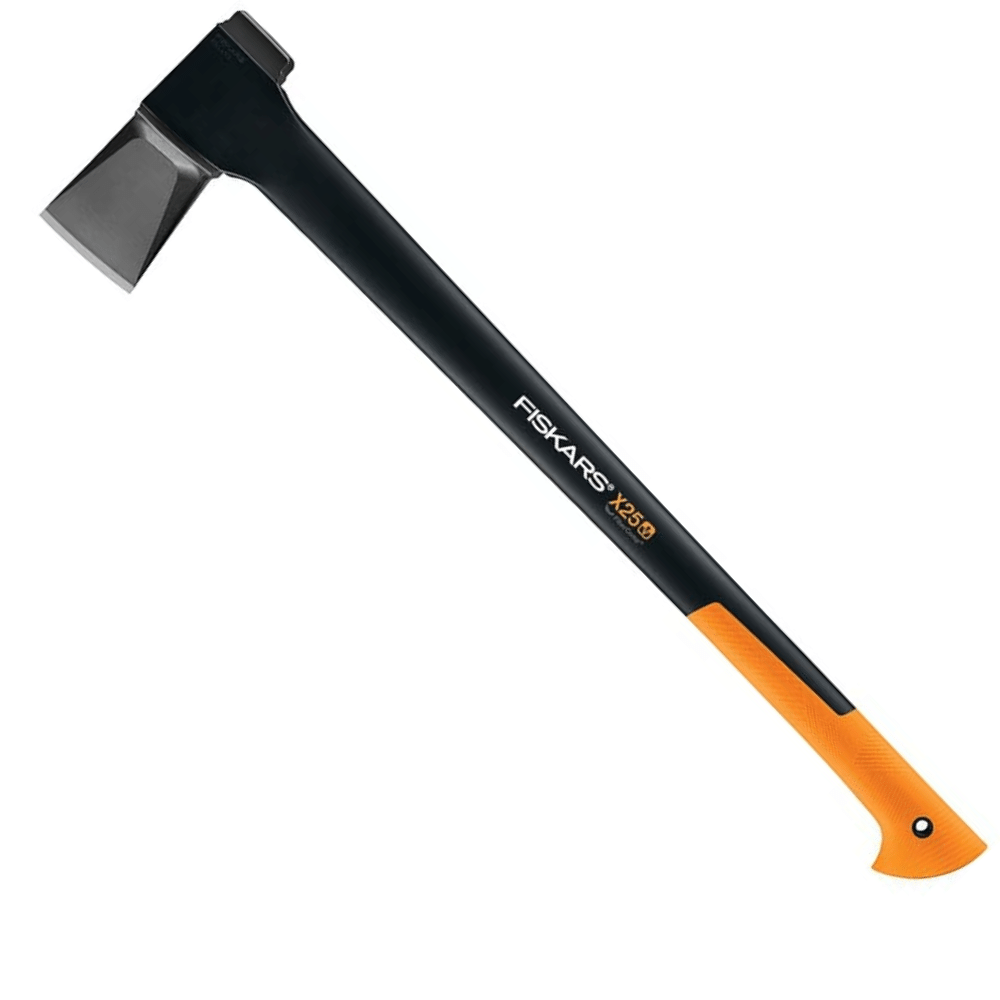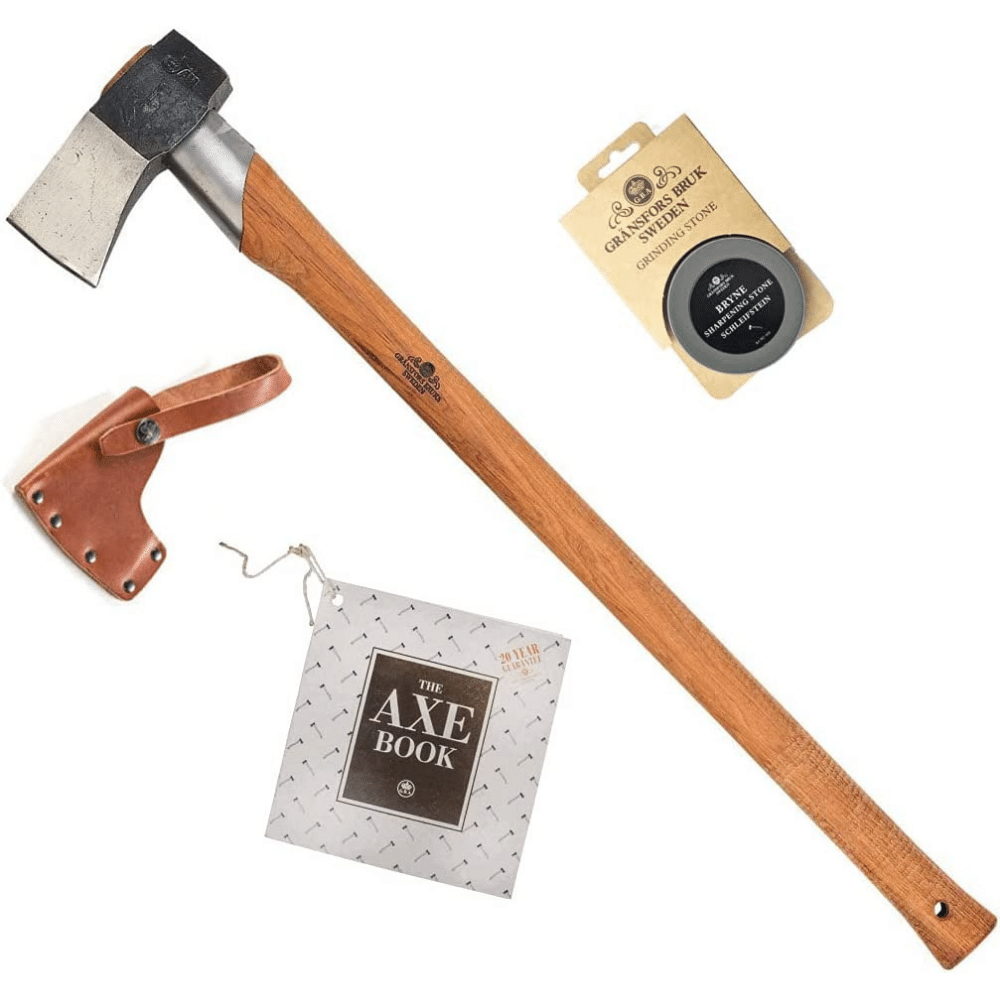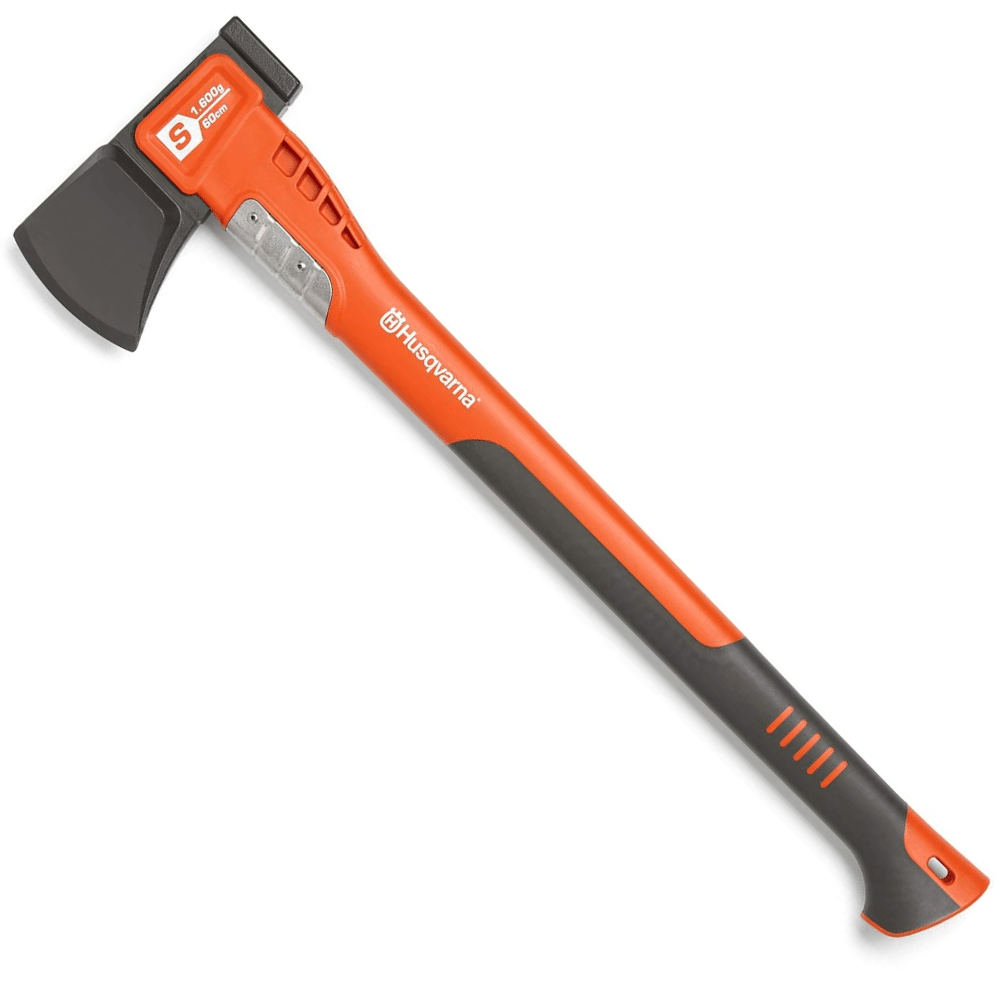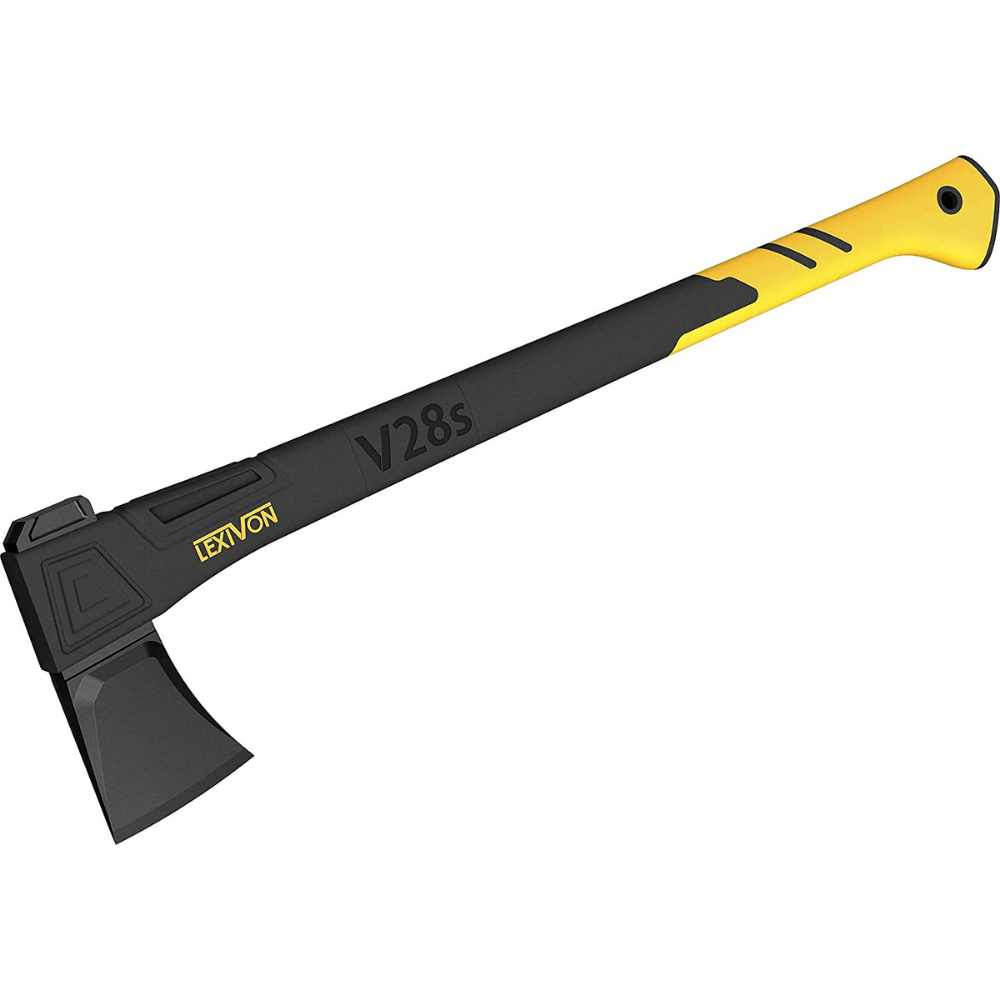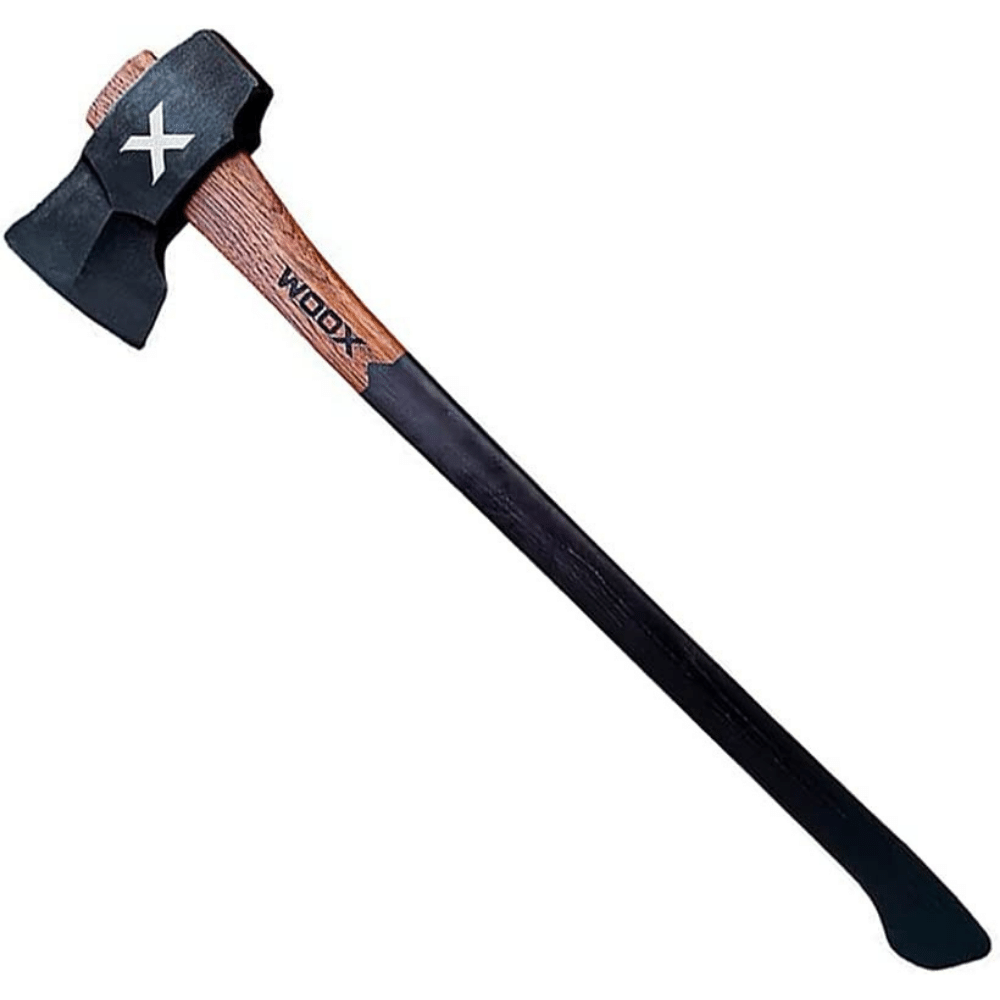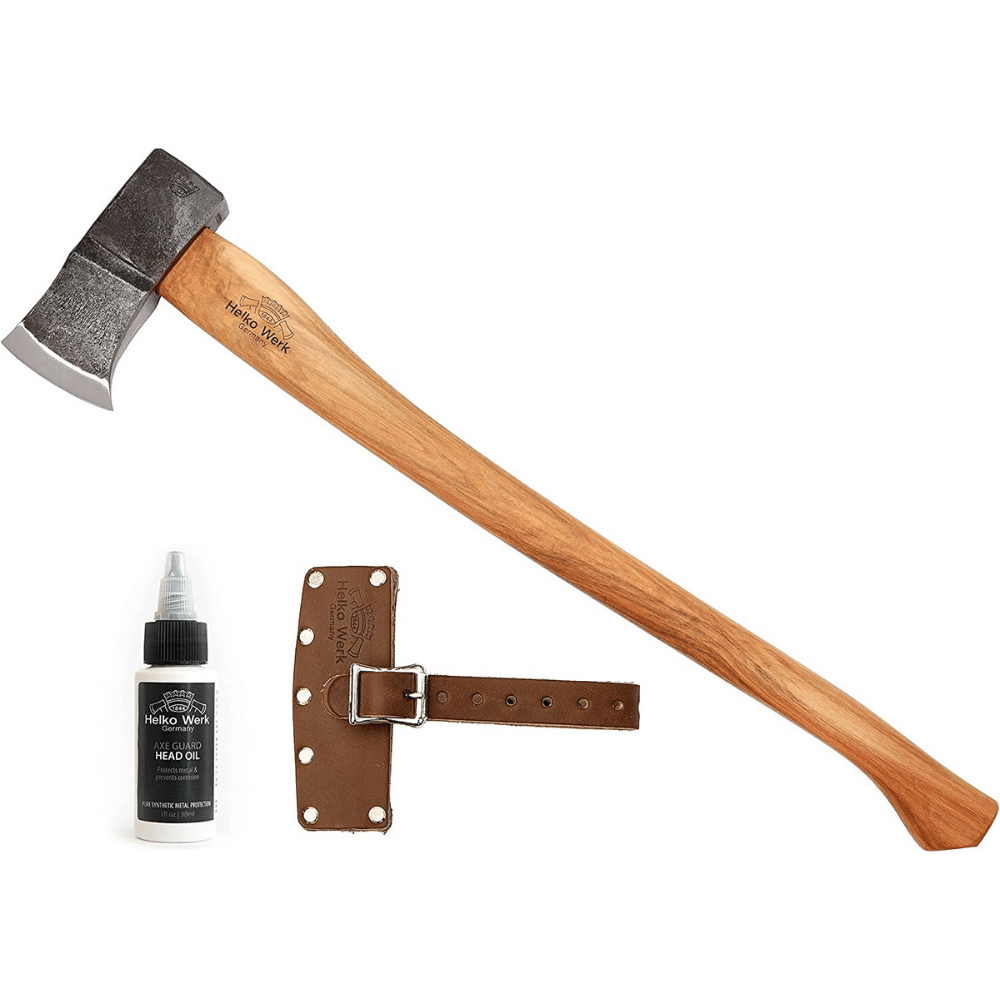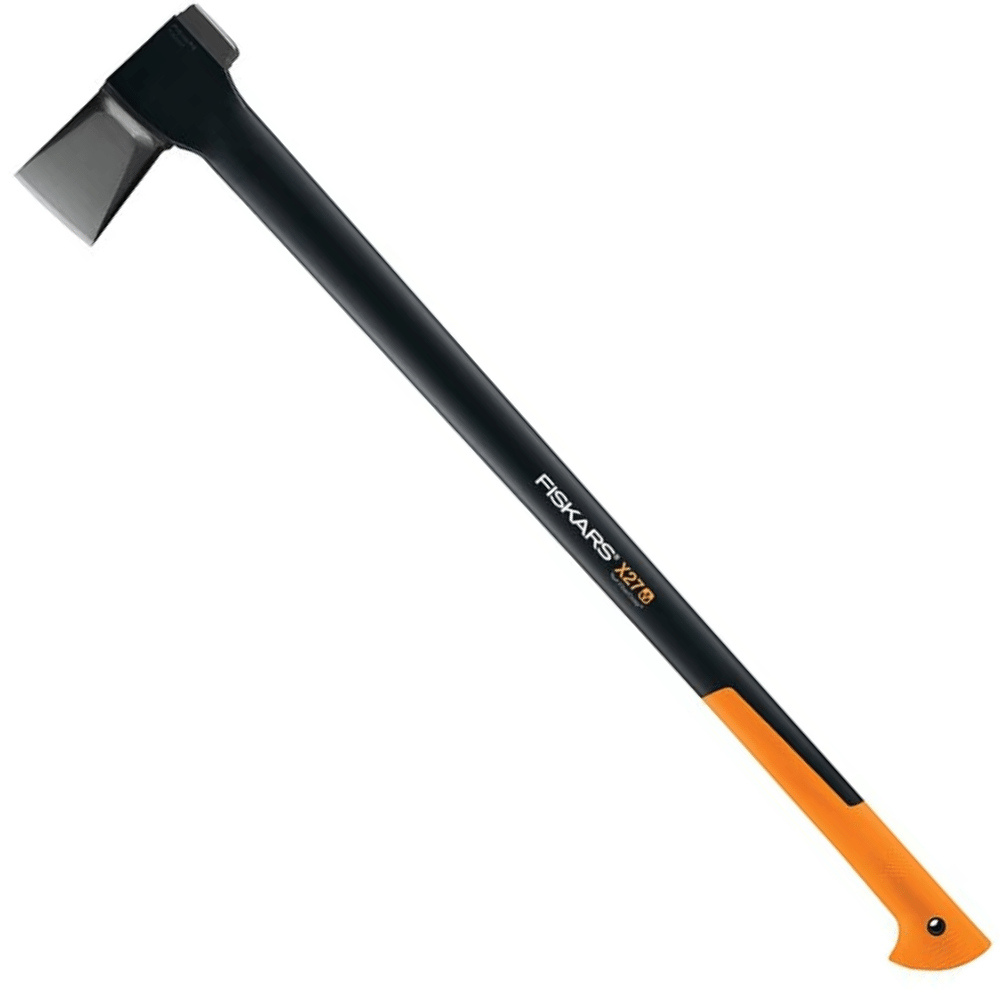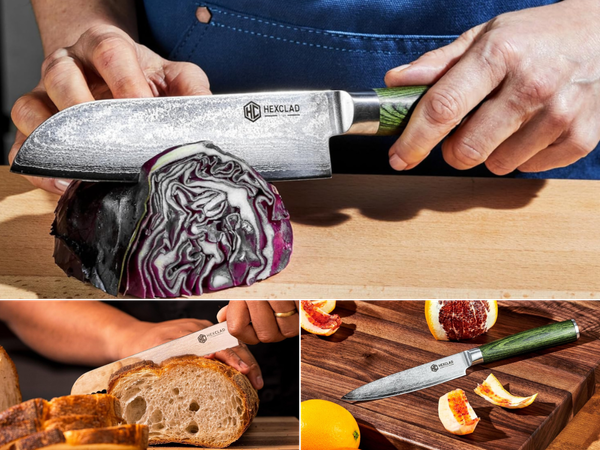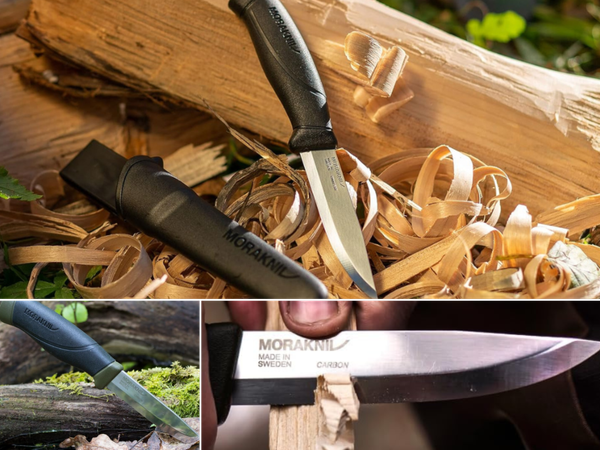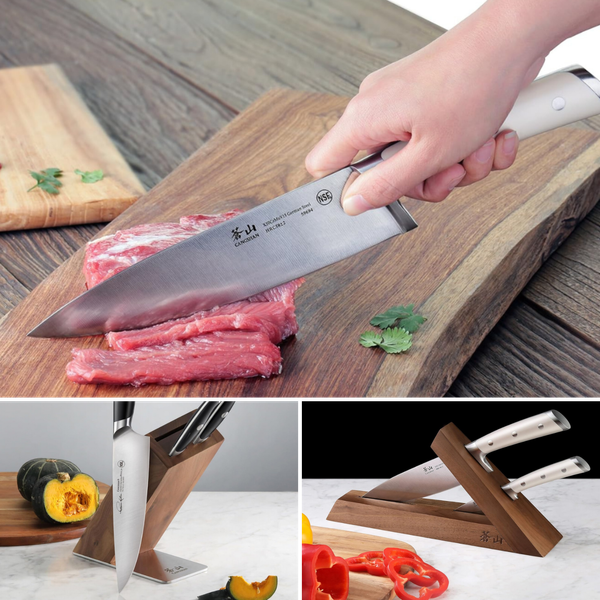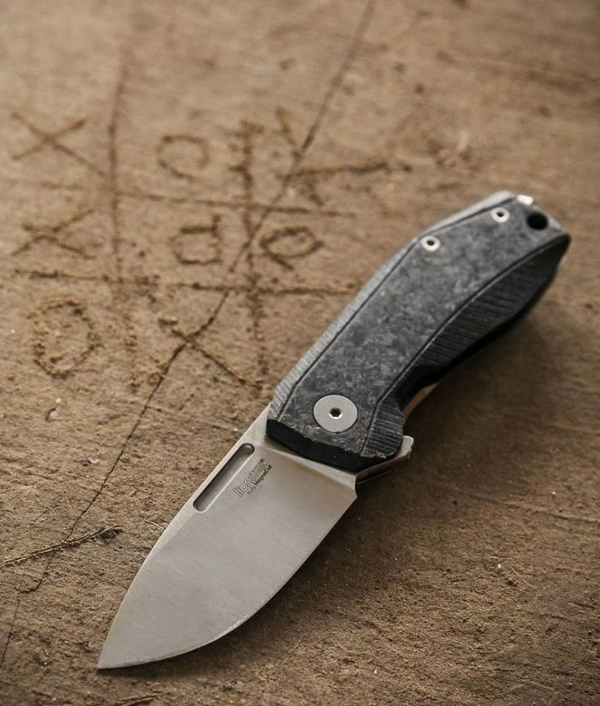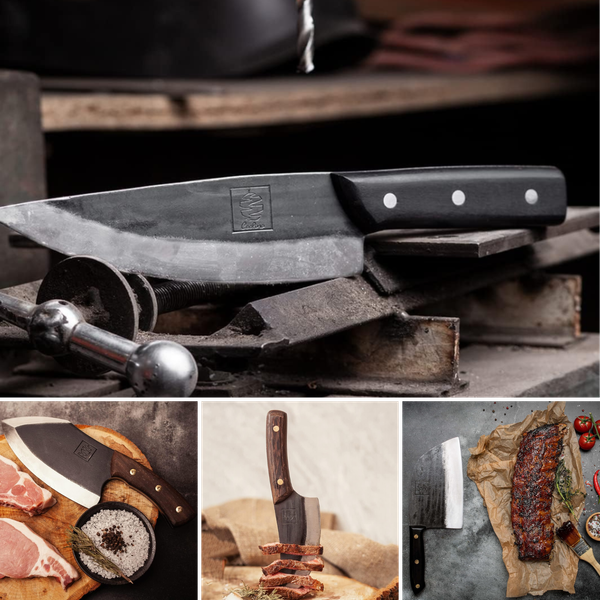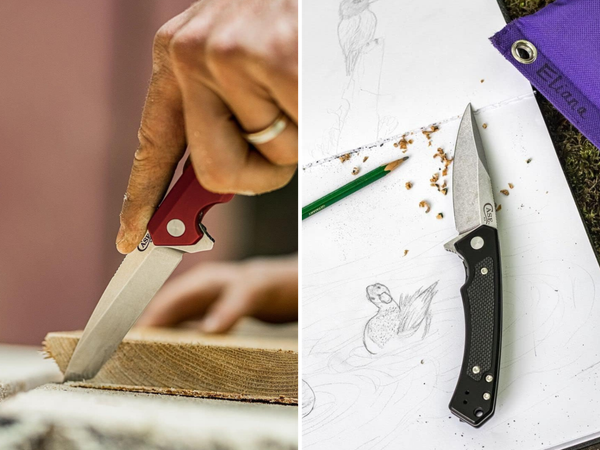Firewood is a seasonal burden. It's hard work to split the logs and you need an axe that can do it quickly so your family doesn't go without heat during cold winter nights.
What makes a good splitting axe?
A head that is more rectangular-shaped than fanlike, the blade of this tool has a rectangular shape. It's designed to fit easily between logs or other materials and provide effective cutting power without dragging along surfaces next door - making for cleaner cuts.
The axe's wedge shape helps to split wood with little effort. When driven through a block, the blade will slide parallel and force two halves of logs apart easily.
What's the difference between felling and splitting?
In general, axes for cutting down trees have a slightly different design than those used when wood needs to be split. Felling axes have a wider head with an almost fan-shaped blade. The design of this tool makes it capable to cut against the grain instead or alongside your wood cutting efforts for increased efficiency.
Here are the best wood splitting axes we could find and you can find yours here so jump in and pick one up today!
Fiskars X25 Splitting Axe, 28-Inch
The Fiskars X25 is a tough axe. Its encased head and FiberComp 28-inch handle make it virtually unbreakable, the shock absorbing technology reduces impact failure to increase durability for increased power output.
The X25 Fiskars axe is a powerful and efficient axe that will help you get more one-strike splits than any other chopping tool. It has an astonishing overall weight of just over 5 pounds, which can be attributed to its high-quality steel blade as well as its 28" ergonomic handle design for increased comfort during use.
Gransfors Bruk Large Splitting Axe 31" (445) with Ceramic Grinding Sharpening Stone (4034) - Bundle
The 31-inch hickory handle is easy to hold with one hand, and the circular grooves on the wood handles provide an excellent grip for increased velocity.
The protective steel collar around its head helps anchor it securely in place so you can throw long distances without worrying about breakage.
Husqvarna 28 in. Steel Splitting Axe with Fiberglass Handle
This Husqvarna axe is designed to split larger firewood, with a premium 5 lbs head steel that's coated for better cutting. It has the perfect balance and weight distribution you're looking for in a splitting axe.
Plus it comes complete fiberglass composite handle so your hands won't get tired when doing repetitive tasks like splitting firewood all day long.
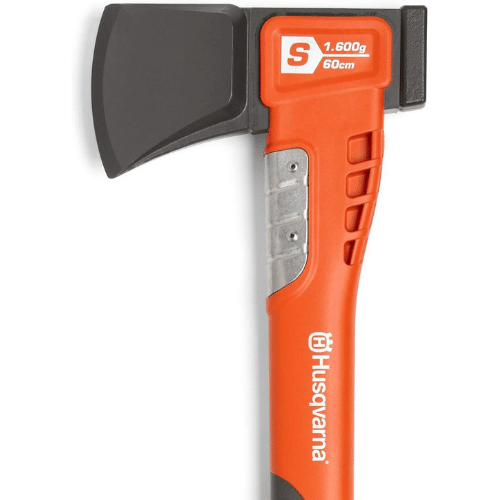
LEXIVON V28s Splitting Axe, 28-Inch Lightweight Fiber-Glass Composite Handle & Ergonomic TPR Grip
This axe can bite harder than any competitor and stay perfectly aligned after years of use thanks to its optimized blade angles, an encased head that is also lightweight for easy handling, and the 28-inch handle length.
The Lexivon is a high-quality log-splitting axe that will easily rival even the most prestigious brands. It features an impenetrable fiberglass handle and a Forged Grade A Carbon Steel blade, which makes it one of the best splitting axes available.
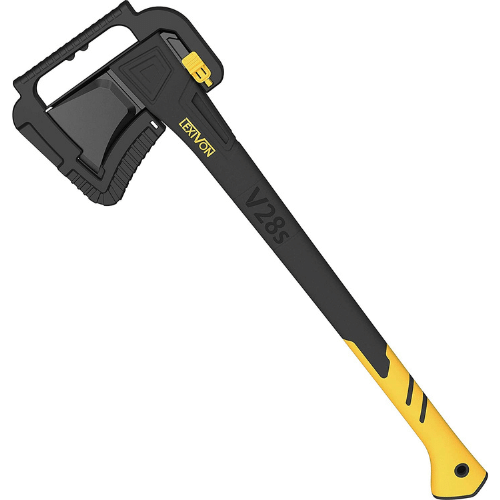
WOOX Forte Compact High Carbon Steel American-Italian Hybrid Axe with Sheath (28 inches)
This tool is perfect for heavy-duty tasks. It has a wooden handle long enough that you can use it without bending over, while still being light and compact enough to take anywhere with just one hand.
The blade features high carbon steel construction which provides a sharp edge and plenty of power when needed most but won't chip or break easily as some other metals might do in certain environments where they aren’t specialized tools designed specifically around this material type alone - giving users peace of mind knowing their investment will last longer than expected. The WOOX Forte is one of the best splitting axes available period!
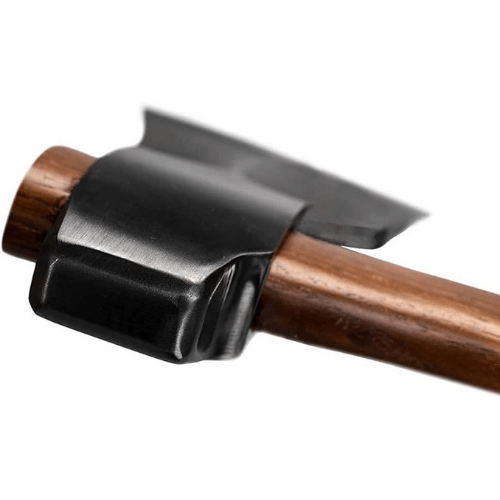
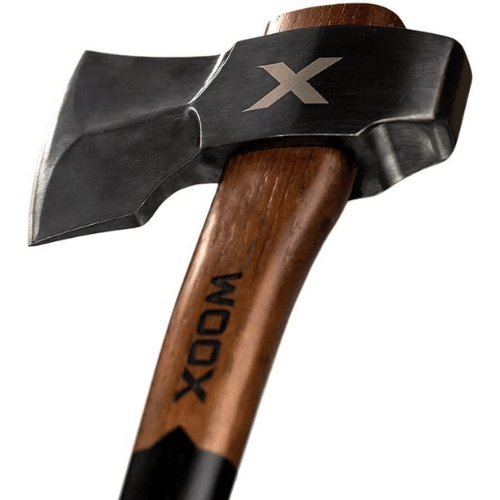
1844 Helko Werk Germany Saxon Splitting Axe for Chopping Firewood and Logs - Wood Splitting Axe with Leather Sheath
The Saxon has a splitting power that is similar to splitting mauls but with the balance and feel of the best splitting axe. The small heel on its blade can be used for moving logs into place or doing other light-duty tasks like shaping wood when needed.
The C50 High Carbon Steel: 53-56 HRC - Helko Werk axe heads are open-faced drop forging individually by hand from German high-grade carbon steel. Drop Forging is a process in which the blacksmith uses tongs to hold and shape hot steel as a drop hammer falls repeatedly onto it. The 6.25lb heavy head of forged steel on the Saxon and the hickory handle make one of the best hand-forged axes ever built.
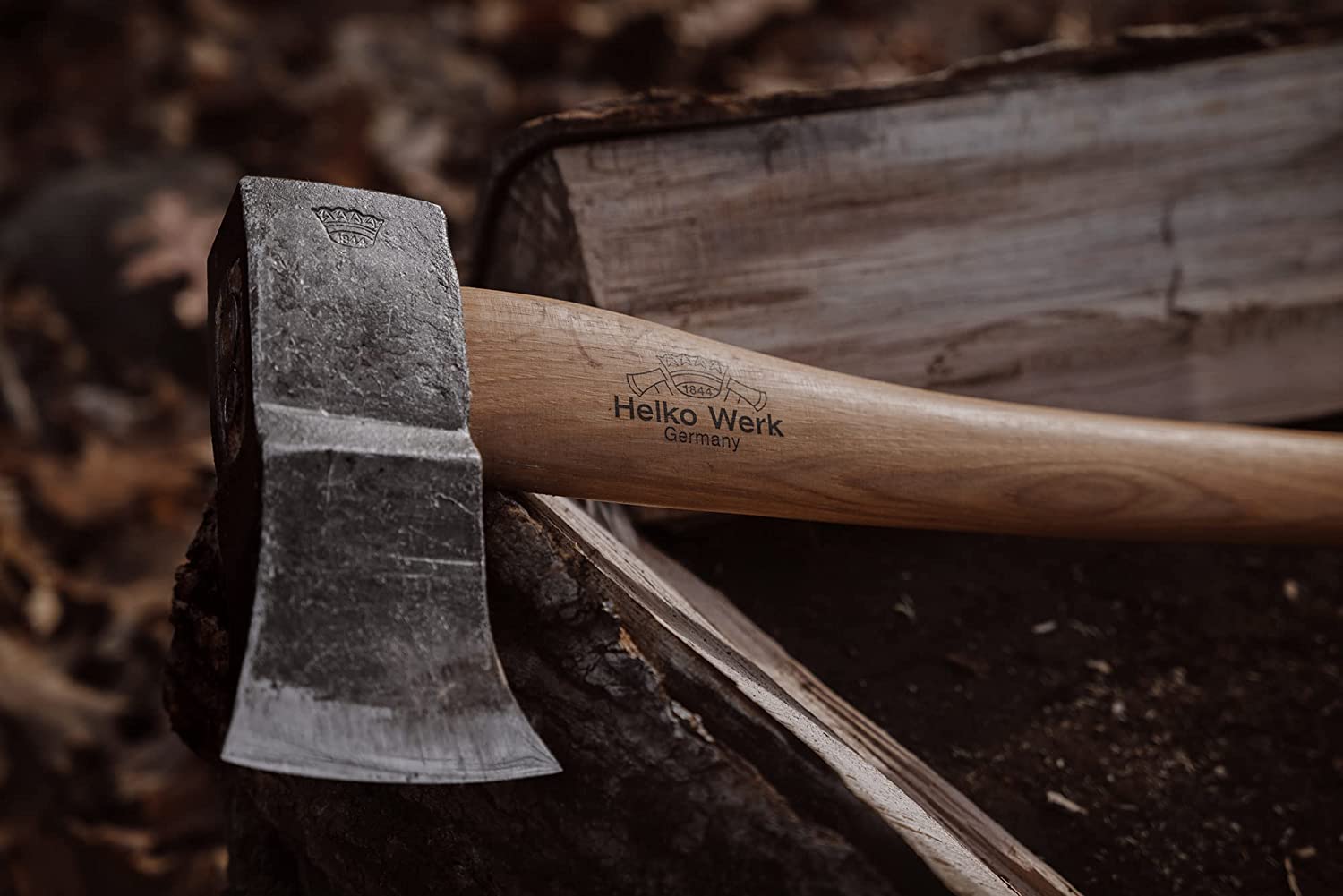
Fiskars X27 Super Splitting Axe 36 Inch, 36-Inch
The FiberComp's 36-inch handle length means you can split longer logs with more ease and efficiency.
The Forged Steel blade is made of a proprietary material that maintains its sharpness through intense use. The low-friction coating on the knife makes it effortless to slice through anything you are chopping up in no time.
this splitting axe is on the heavier side, but it makes up for its weight with a high-impact swing that shorter choppers might find difficult.
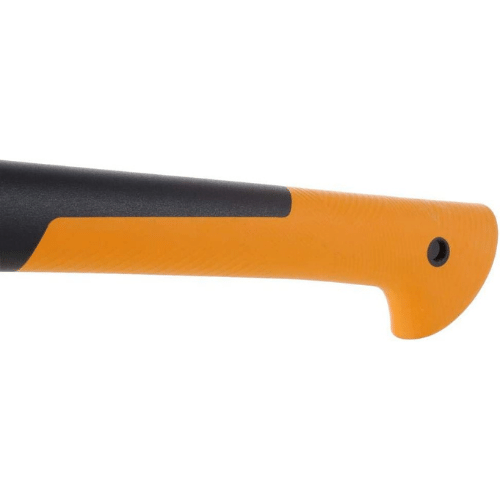
FAQs
What is the best axe to split wood?
The best axe to split wood is the one that feels the most comfortable in your hand and is the most efficient for you.
There are many different types of axes on the market, and each one has its own unique splitting axe features. The important thing is to find an axe that feels good in your hand and is easy for you to use.
Some people prefer a lighter axe that swings faster, while others prefer a heavier axe that delivers more power. It's important to find the right balance between weight and speed for you, so you can easily split logs without getting tired.
How heavy should an axe be for splitting wood?
There's no one-size-fits-all answer to this question, as the ideal axe weight for splitting wood will depend on a number of factors, including your own strength and size, the type of wood you're trying to split, and how thick the pieces you're working with are.
However, in general, a heavier axe will be better suited for splitting larger pieces of firewood, while a lighter axe may be easier to handle when working with smaller chunks or kindling.
When it comes to choosing an axe weight, it's important to first consider your own strength and size. If you're a large or muscular person, you'll likely be able to handle a heavier axe more easily than someone who is smaller.
What is the best multi-purpose axe to buy?
When it comes to multi-purpose axes, there are a few things you need to consider. The most important factor is the type of blade that the axe has. There are two main types of blades: blunt and sharp.
Blunt blades are good for tasks such as felling trees because they won't split the wood as easily as sharp blades will. Sharp blades are good for tasks such as cutting through branches or vines because they will slice them cleanly instead of crushing them as blunt blades will.
Another thing to consider is the weight of the axe. Heavier axes will be more difficult to use, chopping wood is easier than with lighter axes.
Is a heavier axe better for splitting wood?
Yes, a heavier axe is generally better for splitting wood. The weight of the axe head helps to drive the blade into the wood and split it apart. Heavier axes are also more durable and can withstand more impact than lighter axes. However, it's important to find an axe that is balanced properly so that it can be easily wielded and doesn't tire out your arm too quickly.
What kind of axe do lumberjacks use?
Most lumberjacks use a felling axe, which is designed for cutting down trees. The axe handles are usually around 24-36 inches long and have a hand-forged head that's curved to enable the lumberjack to swing it into round surfaces.
Some lumberjacks also use a splitting axe, which has a wider and flatter blade that is designed for splitting logs into smaller pieces.
Should a splitting axe be sharp?
It depends on what you're using it for. If you're using it to split firewood, then you'll need a sharper axe head. If you're using it for chopping down trees, then you don't need as sharp an axe since the wood is softer.
Does splitting wood build muscle?
Splitting wood certainly requires a good deal of physical strength and stamina, so it stands to reason that it could help build muscle. And indeed, many people who regularly split wood do develop considerable muscularity. However, it's important to note that the gains made from splitting wood are heavily dependent on how you approach the task.
For instance, if you simply grab a log and start hacking away at it with all your might, you're not going to get very far. The key to splitting wood effectively is using proper technique, quality tools, and taking your time. There is a learning curve but you will catch on after breaking a hickory handle or two. This means using an axe or maul (the two main tools used for splitting wood) in the correct way, and striking each log in the right spot.
Is it better to split wood wet or dry?
Splitting wood wet is better because the moisture in the wood will help the axe to go in more easily and the wood fibers will be less likely to snap.
When splitting wood, it's important to use an axe that is properly sharpened and to strike the log at a 90-degree angle. If you're not strong enough to swing a heavy axe, use a wedge to split the log instead. Never use your hands or feet to try to move a log that is stuck; you could get seriously injured.
How long should wood sit before splitting?
It depends on the type of wood. Softwoods, like pine, should be split within a few days of cutting while hardwoods, like oak, can sit for several weeks or even months. The main thing to remember is that the longer the wood sits, the more it will dry out and become harder to split even with any of the best splitting axes.
What length axe should I get?
There isn't necessarily a "correct" answer to this question, as it depends on what you plan on using the axe for. However, most people tend to prefer an axe that is around 26-28 inches in length. This allows you to have good control over the axe while still providing enough power to chop through larger pieces of wood.
Also, you will gain control with composite handles over wooden handles because of the added texture on the composite grip.
What is the best splitting log?
There are a lot of ways to split a log and the "best" way really depends on the type of log you're dealing with and what your goal is. If you're trying to produce firewood, for example, you'll want to use a different technique than if you're trying to make lumber.
The most important thing is to use the right tool for the job. A handsaw, for instance, isn't going to be very effective on a large-diameter log; you'll need something with more power, like a chainsaw or a wood-splitting axe. Starting with smaller logs is also easier, so if you can, it's worth cutting it down to size before beginning the splitting process.
What is a Michigan-style axe?
A Michigan-style axe is a kind of axe that originated in the US state of Michigan. It is characterized by its long, thin blade, which makes it ideal for chopping down trees. The Michigan-style axe is also known for being very durable, thanks to its hardwood handle.



